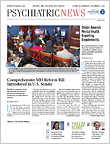Children With ASD Display Different Sniff-Response Pattern
To smell a rose, one may increase airflow through the nose to fully take in the floral aroma. Upon walking into a public restroom, one may do the exact opposite. According to a new study published in Current Biology, this natural adjustment to smell may be lacking in individuals with autism spectrum disorder (ASD).
Israeli researchers presented 18 children with ASD and 18 healthy controls with pleasant and unpleasant odors and measured their sniff response to pleasant and unpleasant odors. While the control group adjusted their sniffing within 305 milliseconds of smelling an odor, children with ASD had no such response, the study authors report.
“The difference in sniffing patterns between the typically developing children and children with autism was simply overwhelming,” Noam Sobel Ph.D., a professor of neurobiology at the Weizmann Institute of Science, said in a press release.
The sniff response was so different between the two groups that the researchers were able to correctly classify participants as children with and without a diagnosis of ASD approximately 80 percent of the time. In addition, the researchers observed that the worse the children’s responses to the odor, the worse the children’s social impairment.
“This raises the hope that these findings could form the base for the development of a diagnostic tool that can be applied very early on, such as in toddlers only a few months old,” said Sobel. “Such early diagnosis would allow for more effective intervention.”
Rozenkrantz L, Zachor D, Heller I, et al. A Mechanistic Link Between Olfaction and Autism Spectrum Disorder.
Curr Biol. July 20, 2015; 25(14):1904-10.
Questionnaire Can Help Identify At-Risk Drinkers
A study published in Journal of the American Osteopathic Association shows that a questionnaire assessing alcohol consumption may be just as or more effective than a blood alcohol content test in predicting at-risk drinking behaviors in trauma patients.
Researchers from Loyola University Medical Center reviewed records of 222 patients, aged 18 and older, admitted to the medical center’s emergency department to investigate how the Alcohol Use Disorder Identification Test (AUDIT) fared against the standard blood alcohol content test in detecting at-risk drinking-related trauma. AUDIT is a 10-point questionnaire developed by the World Health Organization to assess alcohol consumption, drinking behaviors, and alcohol-related problems. A blood alcohol level greater than 0 g/dL and an AUDIT score equal to or above eight were considered positive for at-risk drinking. Performance of both tests was indexed against the National Institute of Alcohol Abuse and Alcoholism criteria for at-risk drinking.
Analyzing patients who underwent both the AUDIT and blood test, the researchers found AUDIT to be 20 percent more effective than the blood alcohol test in identifying patients who tested positive for at-risk drinking.
The researchers concluded that although routine testing for blood alcohol level may have a role in the management of trauma cases, it should be reexamined as a standalone indicator of at-risk drinking.
Plackett T, Ton-That H, Mueller J, et al. Screening for at-risk drinking behavior in trauma patients.
J Am Osteopath Assoc. June 2015; 115(6):376-82.
Early-Life Cognitive Ability May Predict Dementia in Late Life
Education—including elementary school performance—and occupational complexity may predict one’s susceptibility to the onset of dementia in late life, Swedish researchers reported at the 2015 Alzheimer’s Association International Conference held in July in Washington, D.C.
Neuroscientists from the Karolinska Institute and Stockholm University gathered data from 440 adults aged 75 and older with no cognitive impairment to assess if an association exists between elementary school performance, education level, and job complexity and the onset of dementia. Patients’ cognitive functions were analyzed at the study’s initiation and endpoint nine years later.
Over the course of the study, 163 participants developed some form of dementia. After comparing the results with the participants’ elementary school grades in mathematics, reading, geography, history, and writing, the researchers found that dementia risk was doubled in individuals who had the lowest school grades at ages nine or 10, even if they had a more formal education or a job requiring complexity.
Individuals who completed secondary education had a 28 percent lower risk of dementia compared with those with elementary education only. Women in the study who had an occupation that involved high complexity with people (high demands on negotiating, instructing, and supervising) were 60 percent less likely to develop dementia than women with less demanding careers.
“These findings suggest that early-life cognitive ability may be an important predictor of dementia in late life,” Hui-Xin Wang, Ph.D., one of the authors on the study, said in a press release.
Wang H, Dekhtyar S, et al. “Childhood School Performance, Education, and Occupational Complexity a Life Course Study from the
Kungsholmen Project. Alzheimer’s Association International Conference. 2015.
Medical Marijuana Ads May Increase Adolescent Cannabis Use
Youth who report seeing ads for medical marijuana may be more likely to have used marijuana or express intent to do so in the future, according to a study by the RAND Corporation
For the study, researchers surveyed more than 8,000 students (grades 6 through 8) from Southern California during 2010 and 2011, asking about their exposure to medical marijuana advertising, marijuana use, and intentions to use the drug in the future. According to the authors, youth who reported seeing ads for medical marijuana were 50 percent more likely to have used marijuana or report higher intentions for future use of the drug than their peers who reported never seeing such ads.
“As prohibitions on marijuana ease and sales of marijuana become more visible, it’s important to think about how we need to change the way we talk to young people about the risks posed by the drug,” Elizabeth D’Amico, Ph.D., lead author of the study and a senior behavioral scientist at RAND, said in a press release.
Researchers emphasized that the study—the first to explore a link between marijuana advertising and youth behavior—does not directly address whether seeing ads causes marijuana use. However, they added, the findings do raise questions about whether there is a need to revise prevention programming for youth as the availability, visibility, and legalization surrounding marijuana changes. ■
D’Amico E, Miles J, Tucker J. Gateway to Curiosity: Medical Marijuana Ads and Intention and Use During Middle School.
Psychol Addict Behav. June 1, 2015 [Epub ahead of print].




